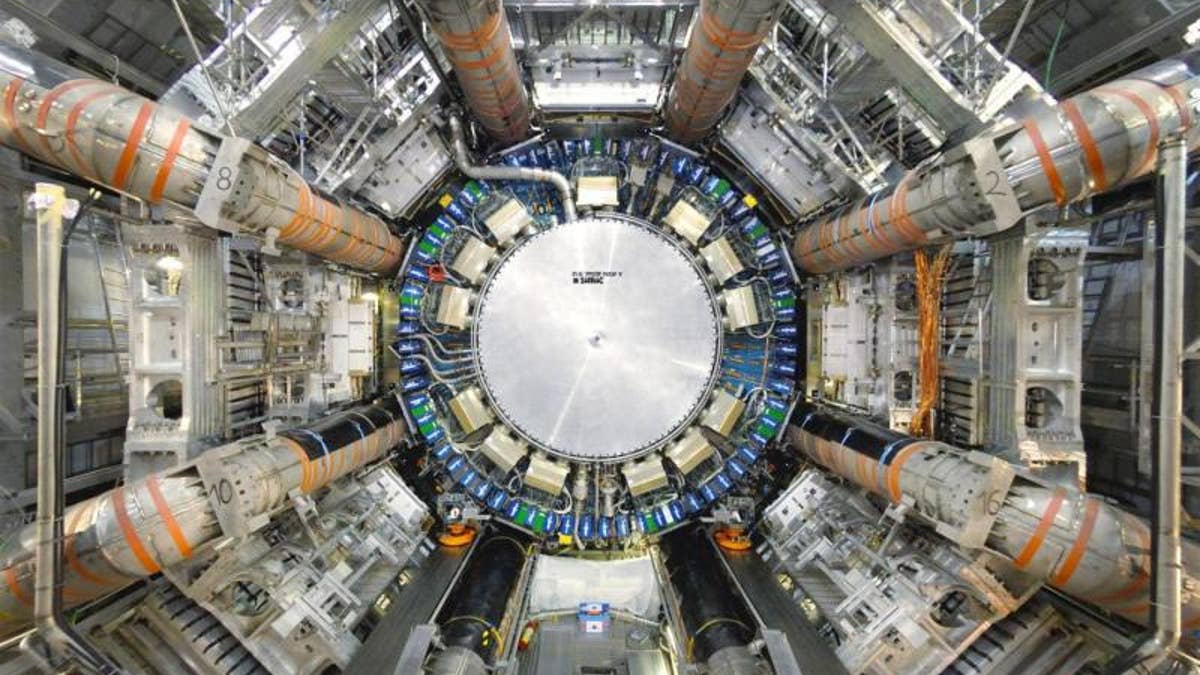
Atlas is one of two general purpose detectors at the Large Hadron Collider. (CERN)
Could scientists have found a particle heavier than the famous Higgs boson?
That appears to be the case. Using the CMS and ATLAS detectors at the Large Hadron Collider (LHC) outside Geneva, Switzerland, scientists discovered an excess of photon pairs carrying around 750 gigaelectronvolts of energy, according to Nature. This could indicate a particle new to nature that would be about four times more massive than the heaviest particle ever discovered – the top quark – and six times heavier than the Higgs.
The results came from higher energy “run 2” experiments that began in June and were suspended in November, according to Nature. A survey of those results was presented Tuesday.
Related: Physicists say they have found long-sought Higgs boson
The results, however, were not a slam dunk. Marumi Kado of the Linear Accelerator Laboratory at the University of Paris-Sud, detected about 40 more pairs of photons in his experiments using ATLAS than models would have predicted, according to Nature. Jim Olsen of Princeton University in New Jersey found that CMS only saw 10.
“It is a little intriguing,” ATLAS spokesperson Dave Charlton of the University of Birmingham in the U.K. told Nature. “But it can happen by coincidence.”
As a result, most physicists are waiting for additional data that should come next year before weighing the significance of this discovery.
Related: Higgs boson find may spell doom for universe
“I don’t think there is anyone around who thinks this is conclusive,” Kyle Cranmer, a New York University physicist who works on the ATLAS team, told The New York Times. “But it would be huge if true.”
The news comes about three years after scientists reported finding a particle they strongly believe was the long-sought Higgs boson using the LHC, the world’s largest particle accelerator. Higgs boson, a manifestation of an energy field pervading the universe called the Higgs field, is a key ingredient in a calculation that portends the future of space and time.




















